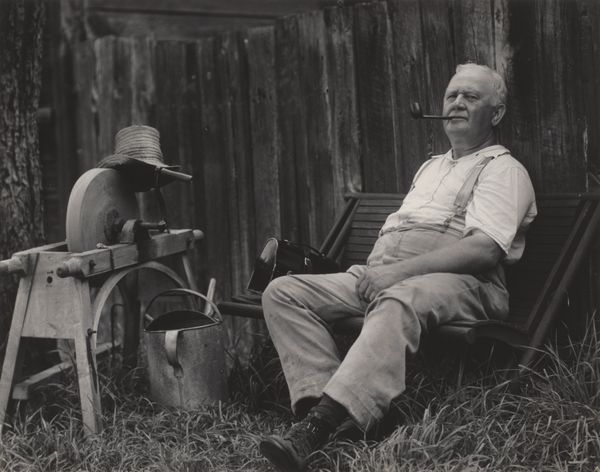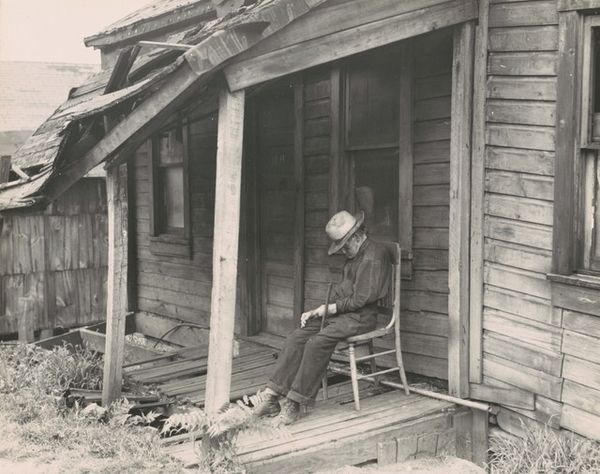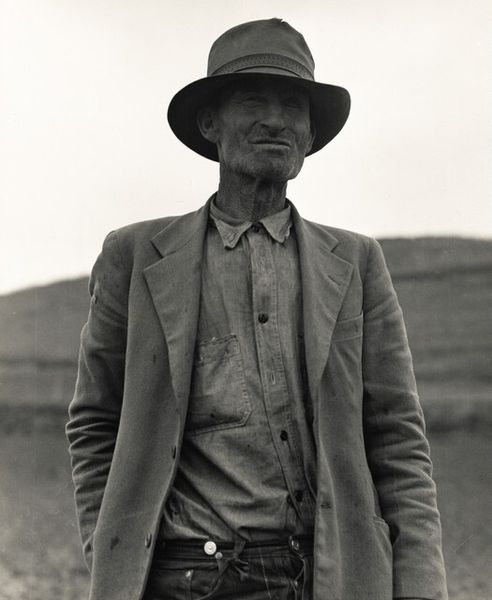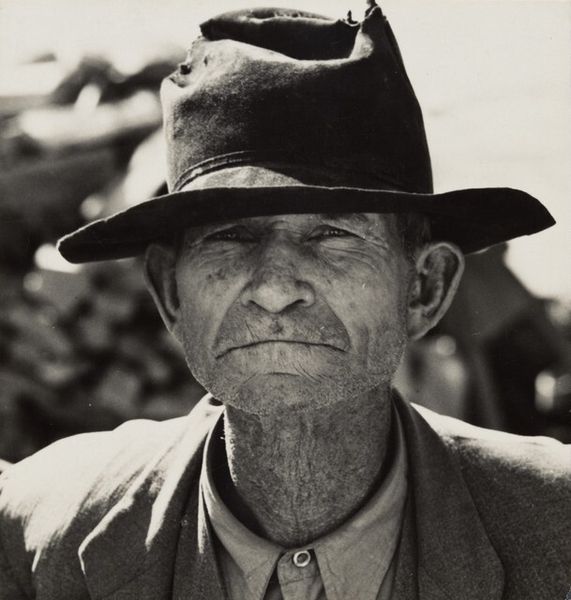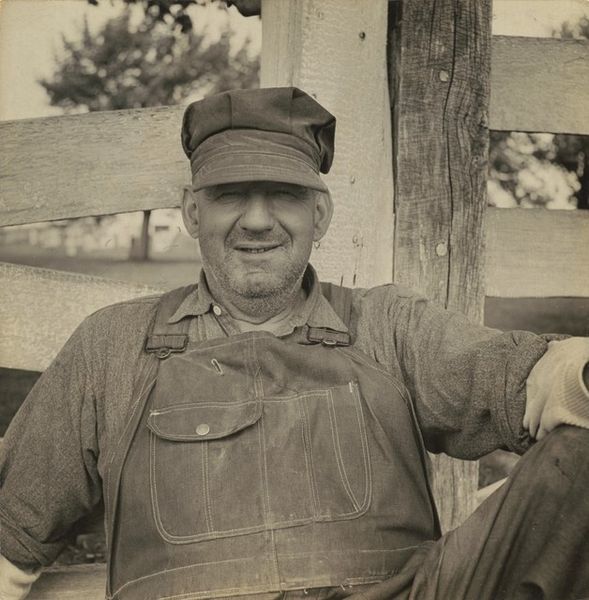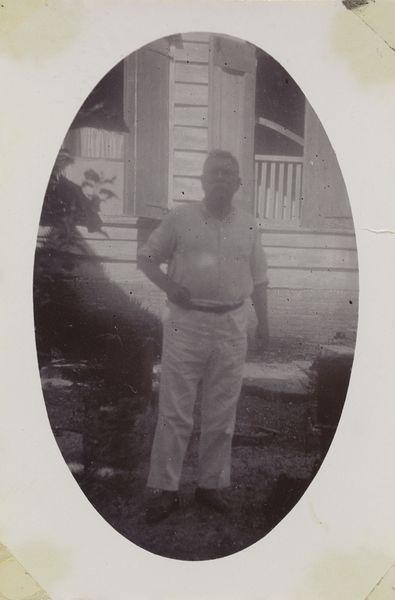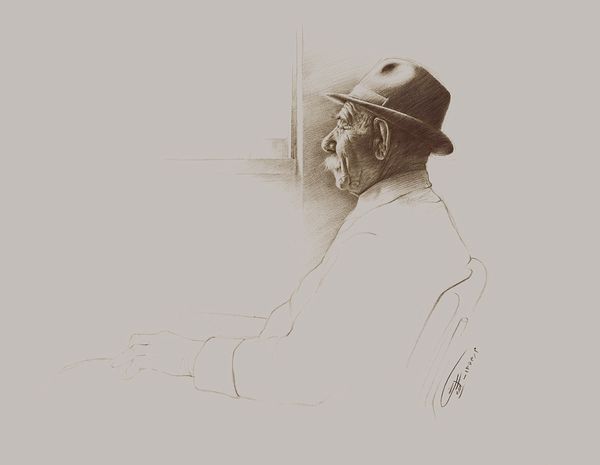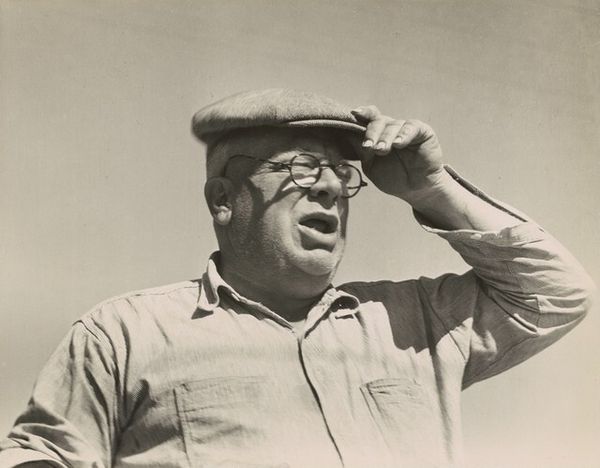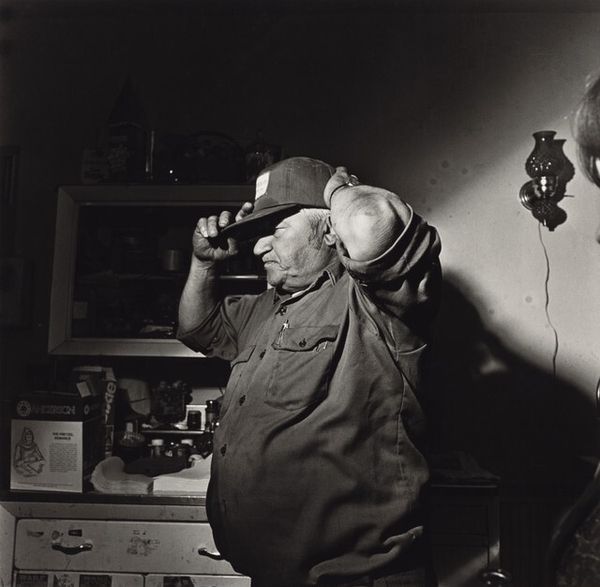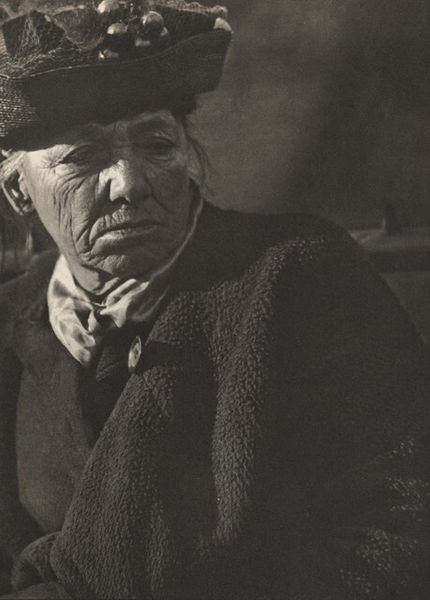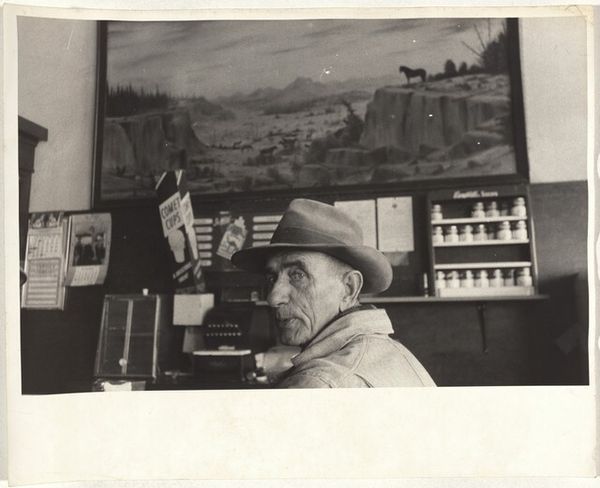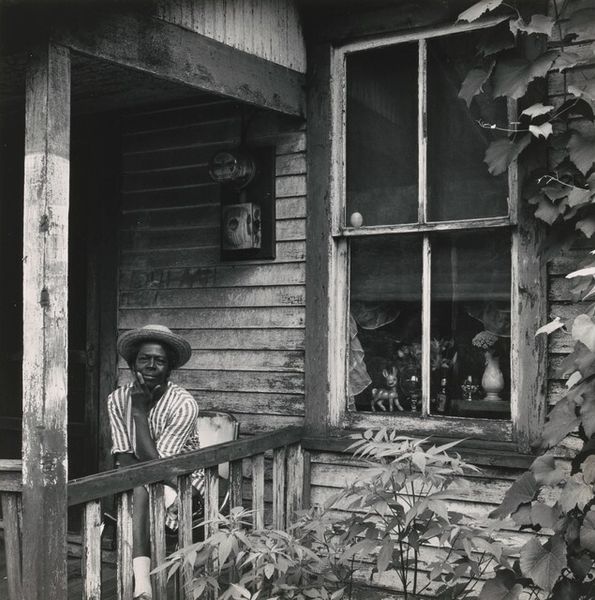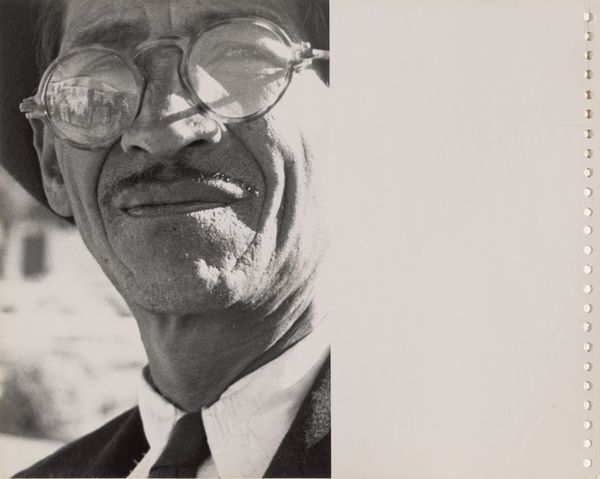
photography, gelatin-silver-print
#
portrait
#
harlem-renaissance
#
outdoor photograph
#
social-realism
#
archive photography
#
photography
#
historical photography
#
cultural celebration
#
gelatin-silver-print
#
monochrome photography
#
realism
Dimensions: image: 34 × 27.2 cm (13 3/8 × 10 11/16 in.)
Copyright: National Gallery of Art: CC0 1.0
Curator: Gordon Parks created this evocative gelatin silver print, "Uncle James Parks, Fort Scott, Kansas," in 1950. Editor: There's an undeniable stillness to this image. The man’s contemplative posture, the monochrome palette... It conveys a sense of quiet dignity and perhaps a touch of melancholy. Curator: Exactly. Parks' composition is remarkable. Notice how the diagonal line of the walking stick cuts through the verticality of the setting, drawing our eye from the lower edge upwards to his face, which is partially obscured by shadow, creating a sense of mystery. Editor: I'm struck by the texture and materiality present despite its being a photograph. You can almost feel the wool of the cardigan, the smoothness of the cane. It speaks to a life lived through material experience and labor. What were the printing processes in that time that enabled the photographer to create these images? It surely added to the labor invested by Parks in making his art, no? Curator: Yes, indeed. And the tonal range in this gelatin silver print contributes immensely to its overall mood. Parks' skillful manipulation of light and shadow—what the French call "chiaroscuro"— lends a three-dimensionality to the figure, emphasizing his presence in space. Semiotically speaking, the cane functions as both a support and a symbol of age and wisdom. Editor: Absolutely. Thinking about the larger social context, gelatin silver printing was the readily available option for creating reproducible artworks. Consider how a work like this one was disseminated through periodicals and displayed in homes. Parks used the available medium of the time to broadcast the existence of individuals. I believe the impact on those who came across these prints at the time cannot be underestimated. Curator: Indeed. The way Parks frames his subject contributes to a broader narrative, inviting viewers to reflect on the lived experiences represented. I believe this piece encapsulates Parks' brilliance in fusing formalism with emotional depth. Editor: The commitment to document labor and experience through accessible technologies elevates the legacy of the work that resonates powerfully across temporal contexts. Curator: Agreed. This portrait remains as resonant today as when it was created, if not more so! Editor: Certainly a powerful reminder of our shared history and humanity.
Comments
No comments
Be the first to comment and join the conversation on the ultimate creative platform.

